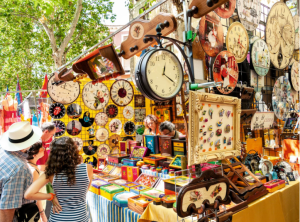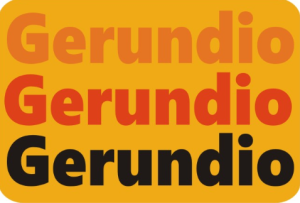Why does your daughter call you “hija”? What does picha even mean? And who exactly is mi arma? Welcome to the magical world of Spanish nicknames…
If you’re learning Spanish, there’s one thing textbooks rarely teach: how people actually speak. And in Spain, that means understanding words like tío, colega, tronco, picha, or churri. They’re not insults (well… not usually 😉), but everyday terms people use to refer to one another — and they change depending on region, context, and how close you are to someone.
MaestroMío is here to explain it all with flair, so you don’t put your foot in it — and so you start sounding like a real Spaniard in no time. Let’s dive into the nicknames that make Spanish feel real.
🧍♂️ 1. “TÍO/TÍA”: THE STREET CHAMPION
“¡Tío, no te lo vas a creer!”
This word has nothing to do with your uncle or aunt. In Spain, tío or tía is used all the time to refer to… basically anyone!
| When it’s used | Example | What it conveys |
| To refer to someone | “Ese tío del bar es majísimo.” | Neutral, informal |
| To greet someone | “¡Tía! ¡Cuánto tiempo!” | Friendly |
| As an exclamation | “¡Tío, qué pasada de peli!” | Surprise, emphasis |
🔎 Cultural note: It’s very common among young people, but adults use it too. And if someone says “Tía, estás loca,” don’t get offended… it might just be a compliment. 😉
👯♂️ 2. “COLEGA”: YOUR BEST MATE (OR YOUR COWORKER)
Colega doesn’t just mean “colleague.” In Spain, it can also mean your best buddy, your party friend, or the guy who lends you money for a kebab at 3 a.m.
| When it’s used | Example | What it conveys |
| With friends | “Quedo con mis colegas esta tarde.” | Camaraderie |
| At work | “Mi colega me cubre hoy en el curro.” | Professional trust |
| As a show of support | “Eres un buen colega, gracias por ayudarme.” | Loyalty, closeness |
📌 Important: Don’t use it with strangers. It has a familiar tone that only works when there’s already some kind of relationship.
⚡ FLASH COMPARISON
| TÍO/TÍA | COLEGA | |
| Who can you say it to? | Anyone, even strangers | Only people you know |
| Can you use it as an exclamation? | Yes (“¡Tío!”) | No |
| Level of closeness | Flexible | More intimate and specific |
🗺️ 3. REGIONAL NICKNAMES THAT WILL MAKE YOU SOUND LOCAL
Every corner of Spain has its linguistic gems. Here’s a quick guide to understanding—and maybe using—some local nicknames:
🔸 Among friends
All over Spain: tío/tía, colega, chaval, máquina, crack
- Andalusia: quillo/quilla, illo, picha (careful! In Cádiz it’s common and NOT offensive)
- Madrid: tronco/tronca, macho, pibe/piba, socio
🗣️ “¿Dónde vas, tronco?” = “What are you up to, mate?”
🗣️ “¡Vamos, picha, que llegamos tarde!” (Cádiz) = “Come on, man, we’re late!”
🔸 In the family
Common: peque, abu, nano/nena, yayo/yaya, tata
- Andalusia: niño/niña, mi arma (“my soul,” said with Sevillian flair), shiquillo/shiquilla
- Madrid: peque, gordi, tata/tato
🔎 Does your daughter call you “hija”? Yes, and your mom might call you “mamá” or “niña”… it’s a sweet way of speaking and shows affection.
🔸 In romantic relationships
Cariño/cari, amor, mi vida, bombón, tesoro, cielo
- In the south: mi arma, churri, cosita linda
- In Madrid and urban areas: nena/nené, churri, tronco (yes, even romantically!)
❤️ “Ven aquí, mi arma, que te voy a dar un beso” → Loose translation: “Come here, I want to give you a kiss”—but Sevillian style!
🎭 4. IDEAS TO PRACTICE IN CLASS OR AT HOME
🎲 Bar role-play
A: “¿Qué te pongo, tío?”
B: “Una cañita bien fría, colega.”
🎧 Listening challenge
Watch a Spanish series (La que se avecina, Élite, Machos Alfa) and note down every nickname you hear.
🗺️ Nickname map
Draw a map of Spain and write in the nicknames you learn. Where do they say picha? Where’s the land of mi arma?
📚 5. A TEACHING TOUCH: WHY DO THESE NICKNAMES EXIST?
In Spanish (especially from Spain), we use affectionate nicknames to:
- Show closeness without sounding too serious
- Replace names in informal situations
- Add rhythm and energy to conversation
And like any living language, usage changes depending on who says it and where.
🎬 CONCLUSION
Learning Spanish isn’t just about memorizing verbs or grammar rules. It’s also about understanding how real people talk. Using words like tío, colega, or quillo helps you break the ice, sound more natural, and connect with the culture in a deeper way.
So now you know: go out, listen, repeat—and don’t be afraid to say:
“¡Tío, qué caña de idioma es el español!”






